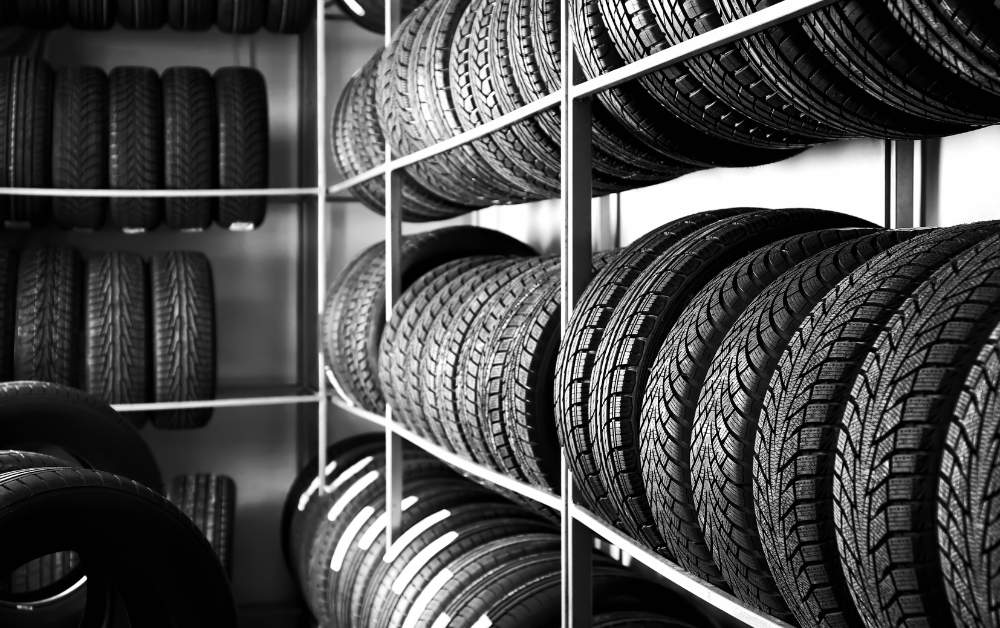As the winter chill sets in, car enthusiasts often find themselves asking, “Where can I store my car for the winter?” Proper winter storage is crucial to ensure your prized possession stays in top-notch condition, ready to hit the roads when the warmer months return.
In this comprehensive guide, we’ll explore the best winter storage options, tips for preparing your car, and essential considerations for car fans who want their vehicles to hibernate safely.
Why Does Winter Storage Matter?
Winter storage matters for several reasons, particularly for car enthusiasts who want to ensure the longevity, performance, and appearance of their prized vehicles. Here are key reasons why winter storage is crucial:
1. Protection from Harsh Elements:
- Cold Temperatures: Exposure to freezing temperatures can adversely affect various components of your car, including fluids, tires, and batteries. Extremely low temperatures can even lead to mechanical issues, making proper storage essential.
- Road Salts and De-icing Chemicals: Winter roads are often treated with salts and chemicals to melt snow and ice. These substances can corrode your car’s undercarriage, leading to rust and other damage over time.
2. Preservation of Exterior and Paint:
Snow and Ice: Accumulation of snow and ice on your car’s exterior can lead to water damage, rust, and paint deterioration. Proper storage helps shield your vehicle from these elements, preserving its aesthetic appeal.
3. Prevention of Fluid Freezing:
Engine Fluids: Engine oil, transmission fluid, and other vital fluids can thicken or freeze in cold temperatures, causing potential damage. Storing your car in a controlled environment helps maintain optimal fluid conditions.
4. Tire Preservation:
Flat Spots: When a car sits in one position for an extended period, especially in cold weather, tires can develop flat spots. Proper storage, including periodic movement or the use of tire supports, helps prevent these flat spots and maintains tire integrity.
5. Battery Health:
Cold Weather Impact: Cold weather can significantly reduce a car battery’s efficiency and charge retention. Storing your car with proper battery maintenance, such as disconnecting or using a trickle charger, helps extend the battery life.
6. Preventing Pest Infestation:
Rodents and Insects: During winter, rodents and insects may seek refuge in your car, causing damage to wiring and upholstery. Proper storage measures, like sealing entry points and using pest deterrents, can help prevent infestations.
7. Long-Term Engine Health:
Starting Issues: Cold temperatures can make it challenging to start your car after prolonged periods of inactivity. Storing your car with proper maintenance, including fluid checks and occasional engine startups, ensures that it’s ready to go when you decide to take it out of storage.
8. Financial Protection:
Preserving Investment: For car enthusiasts, their vehicles are often valuable investments. Proper winter storage protects this investment, preventing the need for extensive repairs and maintaining the car’s resale value.
In summary, winter storage is not just a matter of convenience; it’s a proactive step to protect your car from the harsh conditions of winter. By implementing the right storage practices and winterization techniques, you can enjoy your vehicle for years to come, ensuring it remains in peak condition and ready for the open road when the warmer seasons return.
Choosing the Right Winter Storage Option
Choosing the right winter storage option for your beloved car is a critical decision that can significantly impact its condition during the colder months. Here, we’ll explore various storage options and guide you on selecting the one that suits your needs best:
1. Home Garage Storage:
Advantages:
- Convenience: Access your car easily whenever you want.
- Cost-Effective: No additional storage fees.
- Customizable Environment: You have control over the conditions.
Considerations:
- Space: Ensure you have enough space and that the garage is clean and dry.
- Climate Control: A climate-controlled garage is ideal but not always necessary.
2. Professional Storage Facilities:
Advantages:
- Security: Professional facilities often have advanced security measures.
- Climate Control: Maintains a controlled environment, protecting your car from extreme temperatures.
- Additional Services: Some facilities offer services like regular maintenance and detailing.
Considerations:
- Cost: Professional storage may come with a monthly fee.
- Location: Choose a facility that’s convenient for you.
- Booking in Advance: Secure your spot early, especially during peak seasons.
3. Car Capsules and Car Covers:
Advantages:
- Portability: Capsules can be set up anywhere, and covers are easy to install.
- Protection: Shields your car from dust, moisture, and minor impacts.
- Affordability: Generally more cost-effective than professional storage.
Considerations:
- Ventilation: Ensure proper airflow to prevent condensation.
- Quality: Invest in a high-quality cover or capsule for better protection.
- Regular Checks: Periodically inspect your car under the cover for any issues.
4. DIY Winterization Tips:
- Clean and Wax: Thoroughly clean and wax your car’s exterior to provide a protective layer.
- Fluid Changes: Change oil, top off fluids, and use a fuel stabilizer.
- Tire Care: Inflate tires to the recommended pressure, and consider using tire supports.
- Battery Maintenance: Disconnect the battery or use a trickle charger.
- Pest Prevention: Seal entry points to deter rodents and insects.
5. Insurance Coverage:
- Update Policy: Inform your insurance company about the storage plan.
- Adjust Coverage: Consider adjusting coverage to reflect reduced usage.
6. Regular Check-ins:
- Scheduled Inspections: Periodically check on your car for any issues.
- Start the Engine: Run the engine occasionally to keep it lubricated.
- Address Problems Promptly: If you notice any issues during inspections, address them promptly.
Choosing the right winter storage option involves considering factors such as convenience, cost, and the level of protection required. Whether it’s your home garage, a professional facility, or a car cover, each option has its advantages and considerations. Remember to combine your chosen storage option with proper winterization techniques for comprehensive protection. By making an informed decision, you’ll ensure your car stays in peak condition, ready for your next driving adventure when winter bids farewell.
DIY Winterization Tips
Winterization is a crucial step in preparing your beloved car for the colder months when it might be parked for an extended period. Proper winterization helps protect various components from the harsh effects of winter weather. Here are some essential DIY winterization tips for car enthusiasts:
1. Fluid Changes and Maintenance:
a. Oil Change:
Change the oil and oil filter to ensure clean lubrication during storage. Consider using an oil with a lower viscosity for better cold-weather protection.
b. Coolant/Antifreeze:
Check coolant levels and top up if necessary. Ensure the coolant has the right concentration of antifreeze to prevent freezing.
c. Brake Fluid:
Inspect brake fluid levels and top up if needed. Consider flushing the brake fluid if it’s due for a change.
d. Transmission and Differential Fluid:
Check and change transmission and differential fluids as recommended by the manufacturer.
2. Tire Care:
a. Inflation:
Inflate tires to the recommended pressure to prevent flat spots. Consider slightly overinflating tires, as they may lose pressure during storage.
b. Tire Rotation:
If storing for an extended period, rotate the tires to ensure even wear.
c. Use Tire Supports:
Place tire supports or jack stands under the tires to reduce stress on the suspension.
3. Battery Maintenance:
a. Disconnect the Battery:
Disconnect the negative terminal to prevent gradual discharge. Alternatively, use a trickle charger to maintain the battery charge.
b. Battery Tender:
Consider investing in a battery tender for long-term storage to keep the battery charged.
4. Exterior Protection:
a. Wash and Wax:
Thoroughly wash and wax the car to protect the paint from salt and other contaminants. Consider using a quality carnauba wax for an extra layer of protection.
b. Cover the Car:
Use a breathable car cover to protect the exterior from dust and moisture. Ensure the cover is secure to prevent wind-induced damage.
5. Interior Care:
a. Clean and Vacuum:
Clean the interior thoroughly to prevent stains and odors. Vacuum carpets and upholstery to remove debris that can attract pests.
b. Use Moisture Absorbers:
Place moisture-absorbing products in the interior to prevent mold and mildew.
6. Pest Prevention:
a. Seal Entry Points:
Close gaps and seal entry points to prevent rodents from entering. Consider placing mothballs or cotton balls soaked in peppermint oil to deter pests.
7. Check and Top Up Fuel:
Add a fuel stabilizer to the tank to prevent fuel deterioration. Run the engine for a few minutes to circulate stabilized fuel.
8. Regular Check-ins:
Periodically check on the car, ensuring all systems are functioning. Rotate the tires or move the car slightly to prevent flat spots.
By following these DIY winterization tips, you’ll be taking proactive steps to protect your car during the winter months. A well-prepared car will be ready to hit the roads in top condition when the warmer weather returns, ensuring your driving experience remains enjoyable for years to come.
Section 4: Additional Considerations for Car Enthusiasts
For car enthusiasts, ensuring the well-being of their prized vehicles goes beyond basic winterization and storage. Here are additional considerations that will enhance the winter storage experience and preserve the passion for your car:
1. Insurance Coverage:
a. Review Policy:
Inform your insurance provider about the storage plans. Discuss options for adjusting coverage during the inactive period.
b. Comprehensive Coverage:
Consider maintaining comprehensive coverage to protect against non-driving-related damages like theft, vandalism, or weather-related incidents.
2. Regular Check-ins:
a. Scheduled Inspections:
Plan regular check-ins on your stored vehicle. Address any issues promptly to prevent long-term damage.
b. Engine Start-ups:
Start the engine periodically (every few weeks) to circulate fluids. Allow the engine to reach operating temperature to prevent moisture buildup.
3. Climate Control Considerations:
If possible, opt for a heated storage facility, especially in extremely cold climates. Maintaining a consistent temperature helps prevent condensation and temperature-related issues.
4. Storage Accessories:
a. Car Covers and Capsules:
Invest in a high-quality, breathable car cover or capsule for added protection. Ensure the cover or capsule is well-ventilated to prevent moisture buildup.
b. Desiccant Packs:
Place desiccant packs inside the car to absorb any excess moisture. This helps prevent mold, mildew, and corrosion.
5. Documentation:
Keep a detailed maintenance log, noting all winterization steps and check-ins. Document any issues, actions taken, and dates for reference.
6. Wheel Rotation and Suspension Care:
If the car is stored for an extended period, consider moving it slightly to avoid flat spots on tires. Engage the suspension by gently rocking the car back and forth.
7. Fuel System Considerations:
Use fuel additives designed for long-term storage to prevent fuel system issues. Follow manufacturer recommendations for the correct dosage.
8. Preventative Maintenance:
Conduct a thorough pre-storage inspection, addressing any potential issues beforehand. Fix minor problems to prevent them from escalating during storage.
9. Networking with Car Communities:
Connect with fellow car enthusiasts through forums or social media. Share your winter storage tips and learn from others’ experiences.
10. Educate Yourself:
Keep abreast of new technologies or practices in car maintenance. Attend car care workshops or events to learn from experts.
11. Emergency Preparedness:
Keep an emergency kit in your car with essential tools, a flashlight, and a basic first aid kit. Include contact information for towing services or storage facility contacts.
For car enthusiasts, the winter storage process is not just a necessity but an ongoing commitment to the love and care of their vehicles. By considering these additional aspects, you’ll not only protect your investment but also ensure that your car emerges from winter storage in the best possible condition, ready to hit the roads with the same enthusiasm and performance that defines your passion for automobiles.
Conclusion:
In the world of car enthusiasts, winter storage is not just a necessity but a crucial element in preserving the beauty and performance of your beloved vehicle. By choosing the right storage option, following proper winterization procedures, and staying proactive, you can ensure that your car emerges from hibernation ready for the next driving season. So, the next time you ask, “Where can I store my car for the winter?” you’ll be armed with the knowledge to make the best choice for your automotive passion.










